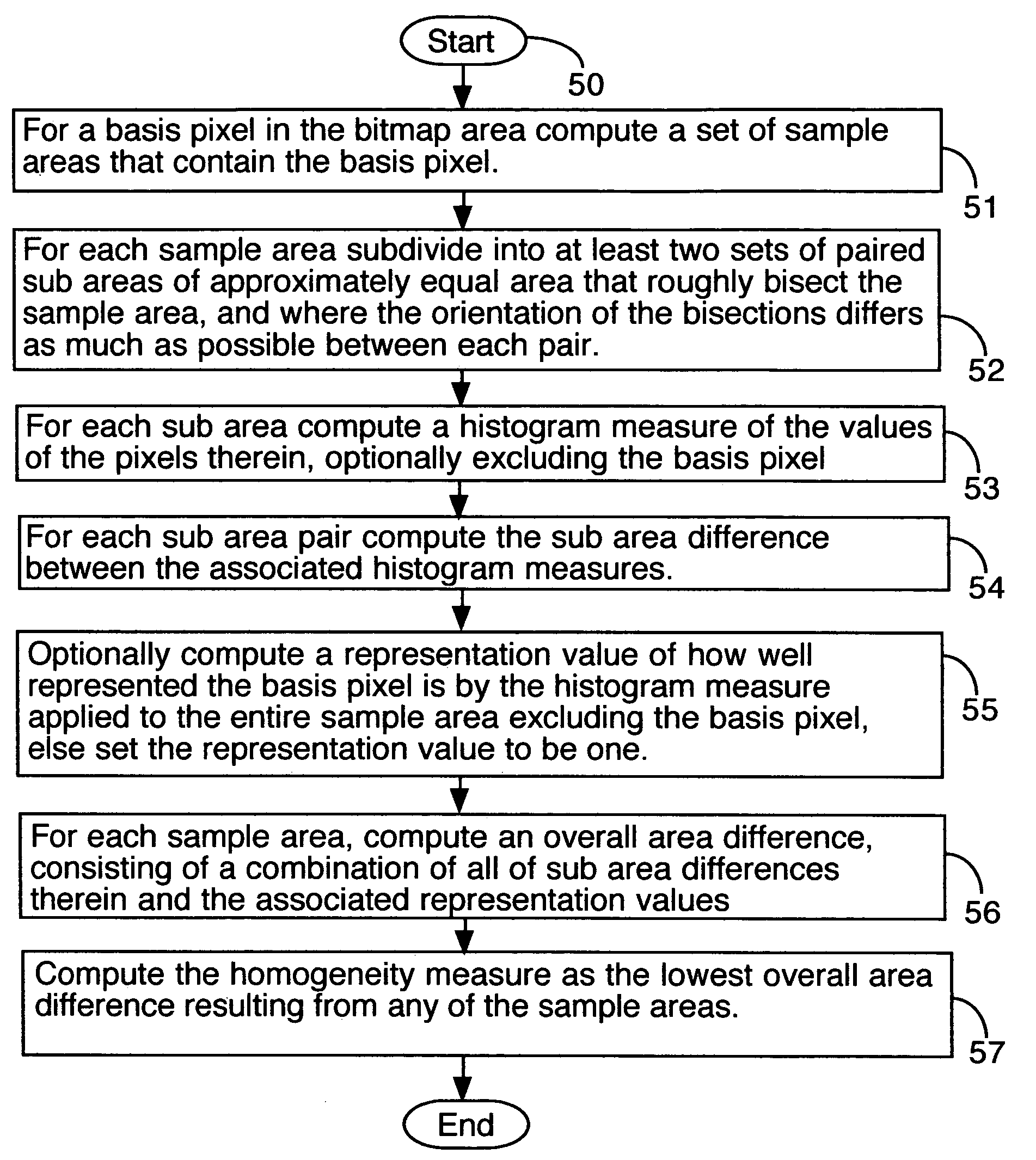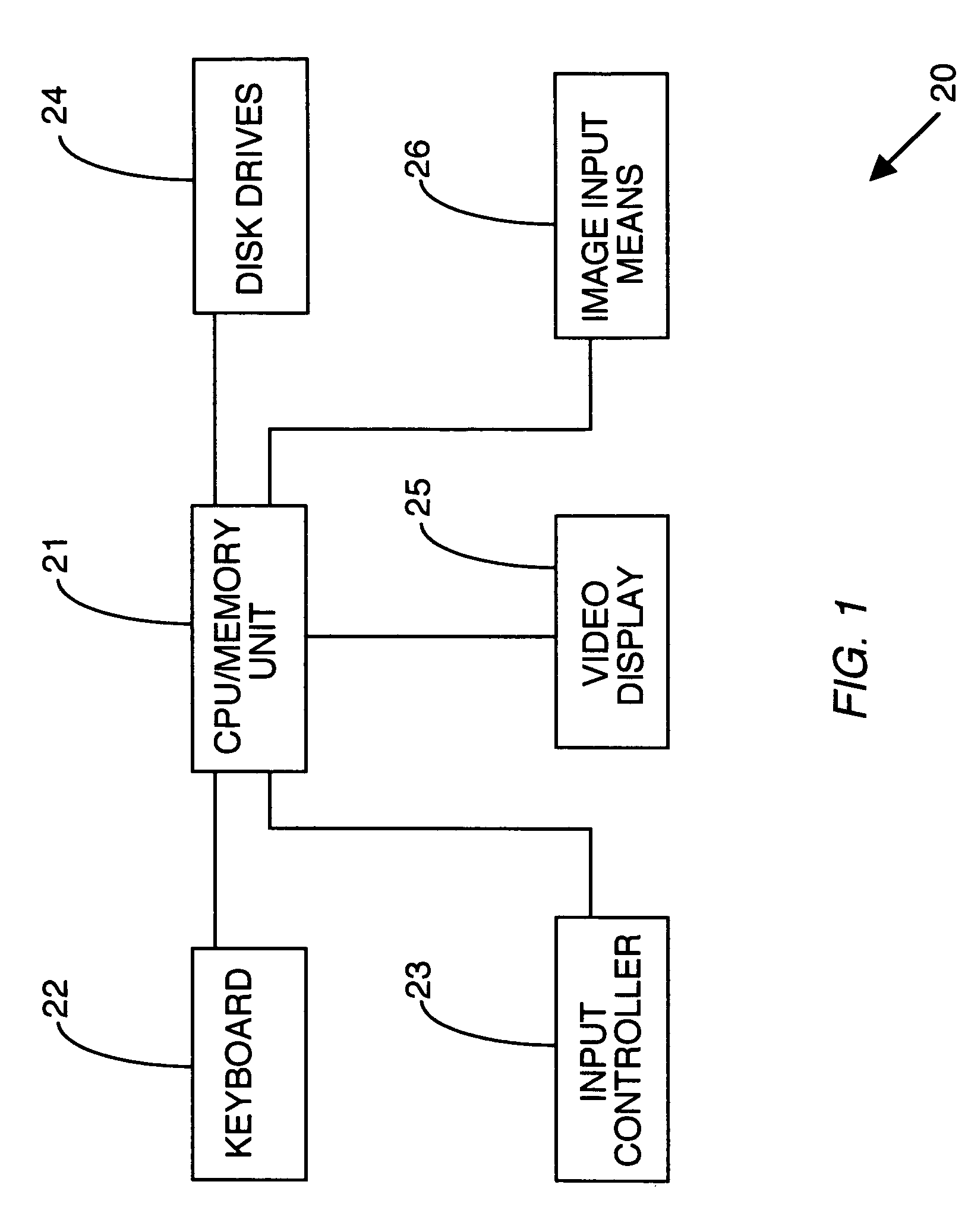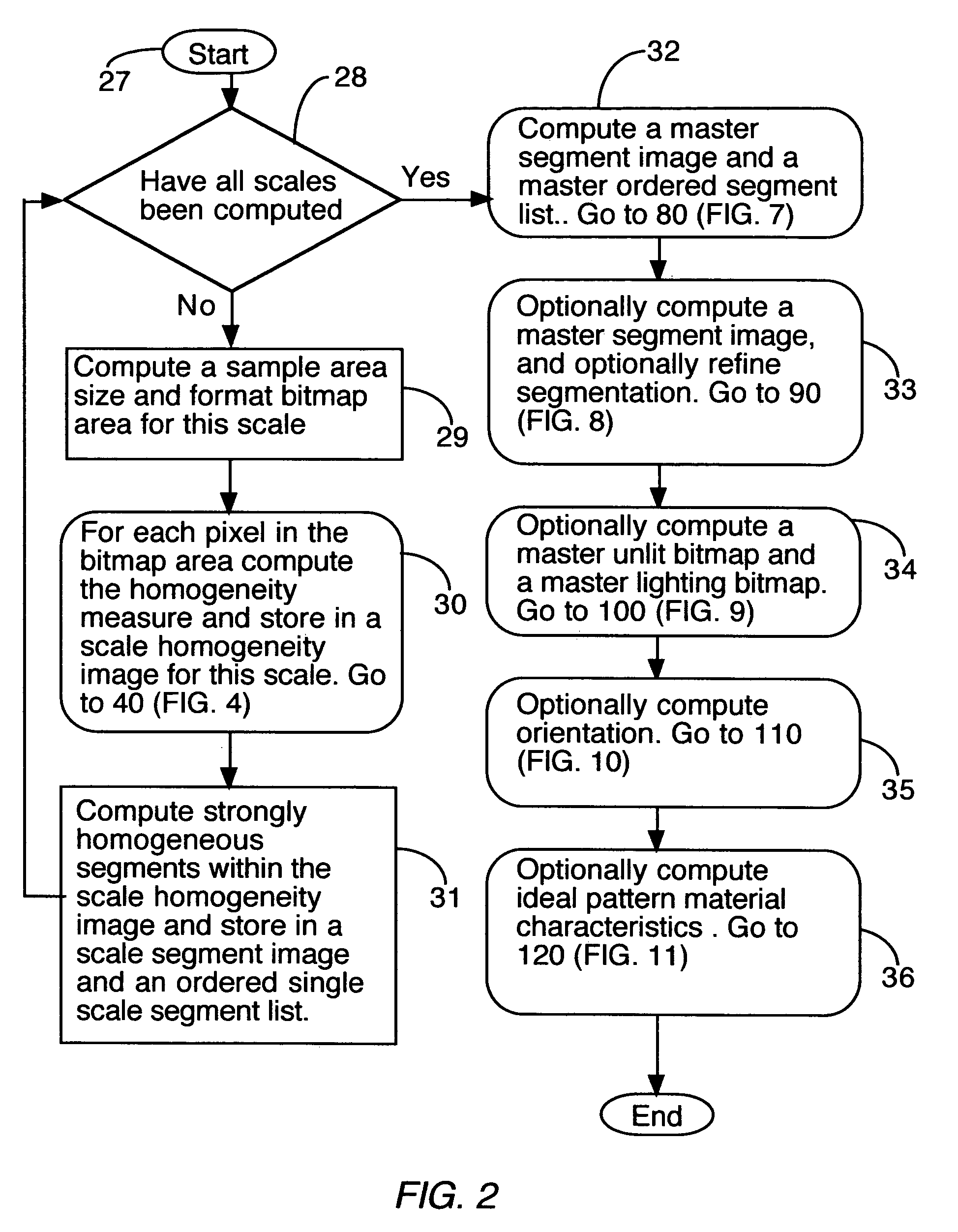Image analysis, editing and search techniques
a search technique and image analysis technology, applied in the field of digital image processing systems, can solve the problems of poor homogeneity and impracticality of extremely narrow areas, and achieve the effects of improving detection ability, accurately characterizing the region, and reducing the chan
- Summary
- Abstract
- Description
- Claims
- Application Information
AI Technical Summary
Benefits of technology
Problems solved by technology
Method used
Image
Examples
Embodiment Construction
[0105]The present invention generally involves the analysis of digital image data. It is helpful to provide a brief discussion of the pertinent computer environment. FIG. 1 is a generalized block diagram of an appropriate computer system 20, which includes a CPU / memory unit 21 that generally comprises a microprocessor, related logic circuitry, and memory circuits. If editing operations are to be performed with manual assistance, a keyboard 22 provides inputs to the CPU / memory unit 21, as does a two-dimensional input controller 23, which by way of example can be a mouse, a 2-D trackball, a joystick, a stylus, a touch screen, a touch tablet, etc., with a mouse being preferred. Disk drives 24, which can include fixed disk drives or forms of data storage and access over a network, are used for mass storage of programs and data. Display output is provided by video display 25. Image data may also be input to the system locally or over a network via an image input means 26, including scann...
PUM
 Login to View More
Login to View More Abstract
Description
Claims
Application Information
 Login to View More
Login to View More - R&D
- Intellectual Property
- Life Sciences
- Materials
- Tech Scout
- Unparalleled Data Quality
- Higher Quality Content
- 60% Fewer Hallucinations
Browse by: Latest US Patents, China's latest patents, Technical Efficacy Thesaurus, Application Domain, Technology Topic, Popular Technical Reports.
© 2025 PatSnap. All rights reserved.Legal|Privacy policy|Modern Slavery Act Transparency Statement|Sitemap|About US| Contact US: help@patsnap.com



